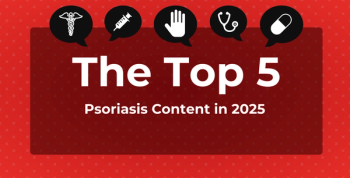
Less Imaging in Cardiac Stress Tests Could Add up to Managed Care Win, Study Finds
A study conducted at NYU Langone Medical Center finds that unnecessary radiation in cardiac stress tests costs $500 million a year and causes nearly 500 cases of cancer. Greater use of ultrasound or treadmill tests could save money and improve patient safety; however, earlier studies by The American Journal of Managed Care point out possible barriers to these options.
Overuse of imaging for cardiac stress tests is harming both patients and the healthcare system by exposing too many to unnecessary radiation and by adding half a billion dollars a year to the nation's healthcare tab, according to a new study published this week in the Annals of Internal Medicine.
By contrast, using alternatives to imaging for stress tests, such as ultrasound or treadmill tests, could give physicians access to this important clinical tool while improving patient safety and achieving savings, according to researchers from NYU Langone Medical Center.
"Cardiac stress testing is an important clinical tool," Joseph Ladapo, MD, PhD, assistant professor in the Departments of Medicine and Population Health and the study’s lead author, said in a statement. However, he said, “We are over using imaging for reasons unrelated to clinical need. This is causing preventable harm and increasing healthcare costs.”
"Reducing unnecessary testing also will concomitantly reduce the incidence of radiation related cancer," he added.
Why do physicians employ radiology when safer options are available? Studies that appeared in The American Journal of Managed Care in the past 2 years suggest many factors, on the part of both patients and doctors:
- A study conducted at Massachusetts General Hospital, published in November 2013, found that time pressures physicians face might cause some to rely more heavily on diagnostic tests, including radiology, rather than time-consuming steps such as an extensive physical exam and patient history.
- A separate study published in The American Journal of Managed Care in 2012, based on records from more than 85,000 patients, found several factors among patients that affected their likelihood of having imaging. Among them: obesity, taking more than 10 medications, their gender, and whether they had congestive heart failure, diabetes, or hypertension. Among the physician factors affecting the likelihood of the use of imagine was the physician's level of experience.
The NYU Langone Medical Center study is believed to be the first comprehensive examination of trends in cardiac stress testing involving imaging. Researchers found that excessive use cost the healthcare system more than $500 million a year and caused nearly 500 future cases of cancer.
The team designed the study using data from the National Ambulatory Medical Care Survey (NAMCS) and the National Hospital Ambulatory Medical Care Survey (NHAMCS) from 1993 to 2010. Patients chosen for the study were adults without coronary heart disease who were referred for cardiac stress tests.
Between 1993 to 1995 and 2008 to 2010, the annual number of ambulatory visits in the United States in which a cardiac stress test was ordered or performed increased by more than 50%. Cardiac stress tests with imaging comprised a growing portion of all of these tests, rising from 59% in 1993 to 1995 to 87% in 2008 to 2010. At least 34.6%—or 1 million tests—were probably inappropriate, the researchers concluded, with associated annual costs and harms of $501 million and 491 future cases of cancer.
According to information from NYU Langone Medical Center, the authors concluded that there was no evidence of a lower likelihood of black patients receiving a cardiac stress test with imaging (odds ratio, 0.91 [95% CI, 0.69 to 1.21]) than their white counterparts. There was, however, some modest evidence of disparity in Hispanic patients (odds ratio, 0.75 [CI, 0.55 to 1.02]).
Changing population and provider trends could explain the escalation in cardiac stress testing, the researchers found, but not the rise in the use of imaging. "We estimate that about 500 people get cancer each year in the U.S. from radiation received during a cardiac stress test when, in fact, they most probably didn't need any radiological imaging in the first place,” Dr Ladapo said. “While this number might seem relatively small, we must remember that 'first, do no harm' is one of the guiding principles in medicine."
The American Journal of Managed Care
He called for greater use of exercise treadmill tests or stress testing with ultrasound imaging; the former is a more time-consuming procedure that might require a reconfiguration of staffing, given the findings of the earlier study in .
Around the Web
Newsletter
Stay ahead of policy, cost, and value—subscribe to AJMC for expert insights at the intersection of clinical care and health economics.








































